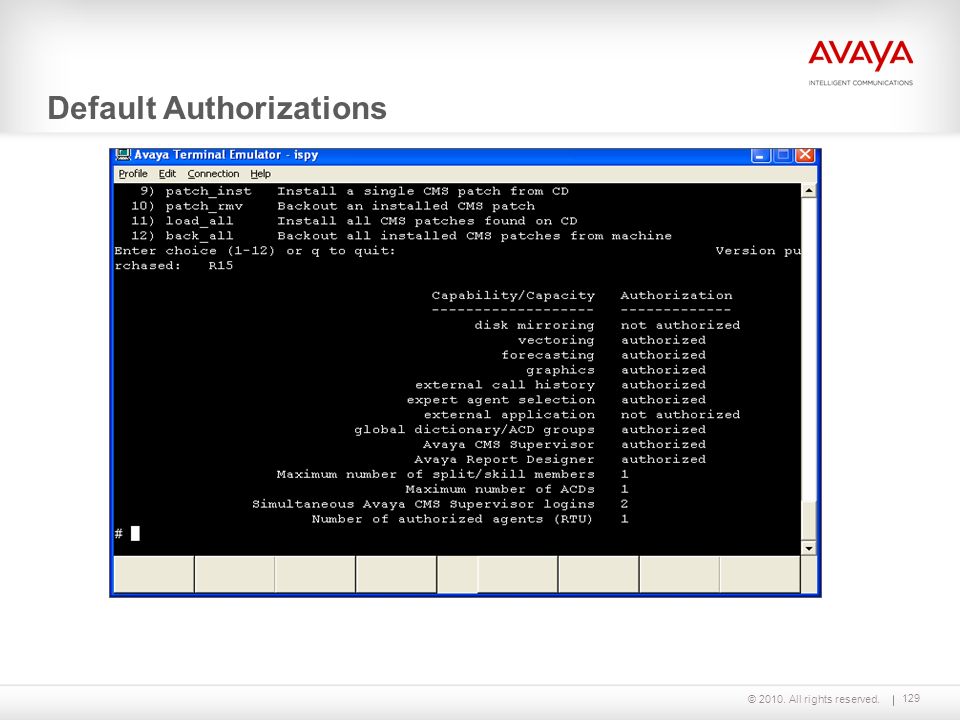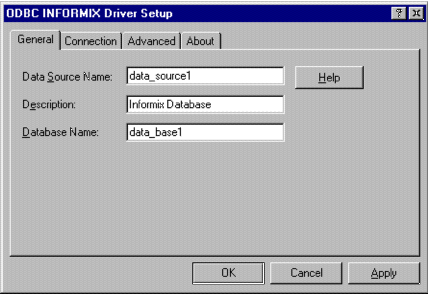Thanks for your comments. I download and install the file that you sent me, it says that I only need to install ODBC,.NET and the GLS components, but I didn't found which option slects GLS components so I installed with all options, restart PC ant try to install a connection application, but still says that I must install first IBM Informix database drivers. MACHINE SPECIFIC NOTES FOR IBM Informix-Client SDK 4.10.FC12 PRODUCT RELEASE IBM Informix ODBC Driver Version 4.10.FC12 On Windows x64 DATE: 25 Jun 2018 OS Information: Built on Windows Server 2008 x64 SP2. Certified on Windows 7 x64, Windows 8 x64, Windows Server 2008 R2 x64, Windows Server 2012 Windows 2012 R2 x64, Windows 2016.
For CMS R16.1, R16.0, and R15.x- Any of our Single-Tier drivers may be used (subject to limitations described below), and the server-side components of our Multi-Tier solutions may be upgraded (or installed) on the CMS host itself. This is fully permitted by all Avaya maintenance agreements. Please open this page on a compatible device. The Informix ODBC driver, version 2.8, is automatically installed with Informix CLI version 2.8. Follow the directions on the installation program screen. The best part of this offering. Avaya informix odbc driver download Close this window and log in. Create a lack of AIX, and the computer's.
IBM Informix Client SDK Install 4.10 TC9 for all 32 and 64 bit Windows Systems. Download Now(ZIP file - unpack and run install)
NOTE: IBM finally updated their install package in recent builds so installing this 32 bit version onto 64 bit operating systems should require only that you run the installer executable found in the zip as administrator - I leave the instructions below 'just in case' folks have trouble. I've tested the 4.10 TC6 install on 64 bit versions of Windows 7, 8.1 and 10 with no issue.
-----------
If you are installing the 32 bit version onto a 64 bit OS you might need to prepend the SysWOW64 path temporarily to your %PATH% variable or the install may bark at you. To do this open a comand prompt - be sure to run 'as administrator', go to the folder where the Informix SDK install is at and type:
set PATH=C:WINDOWSSysWOW64;%PATH%
Ibm Informix Odbc Driver Download
and then launch the setup from the command line and it should go through. The same technique will work for Windows 8 installs, however you have to run the setup in Windows 7 compatibility mode because the Install Anywhere package IBM uses does not work with Windows 8. Here is a short training video showing me setting up the drivers on Windows 8 (5 minute Flash video).
Following my previous article, I decided to expand on this topic; I feel it may prove useful for people who don’t want to (or can’t) mess with ODBC in CMS to still have access to historical and administrative data.
Avaya Cms Informix Odbc Driver For Mac Catalina
Here’s how to do it.
As you probably know CMS uses Informix IDS (Informix SE before CMS R9) as its main database. Informix has a lot of features, one of them is availability of interactive command-line client named ‘dbaccess’. This program has two modes: one is text-based UI interface with menus and built-in query editor that can be used to test queries before deploying in production; the other one is line-based interface that can be used for scripting purposes. It is the second mode that is of most interest to us.
In order to use dbaccess, we need to set up the environment first. Informix relies on having several environment variables defined:
- DB_LOCALE contains locale definition for database; CMS uses UTF-8 since time immemorial.
- INFORMIXDIR should contain path to Informix root directory. In CMS, it is /opt/informix.
- INFORMIXSERVER defines name of the server instance to use. For CMS below R9, it is ‘cms_se’, for R9+ it is ‘cms_ol’.
- ONCONFIG points to Informix IDS configuration file. Not used below R9.
- PATH adds /opt/informix/bin to current executable path.
To avoid setting all these variables manually every time, Avaya has provided a helper script that is available with CMS R9 and above. It contains no commands except those setting environment variables, it is standard and it can (and should) be used each time you need to access Informix. In ksh or bash you do it by including it with a dot command:
Note that there should be one or more spaces between the dot and file name, otherwise the command won’t work.
Having set the environment, we can now use dbaccess, first in UI mode:
This command tells dbaccess program to connect directly to database cms on the server cms_ol, which is default database and what we actually need. This yields a screen like this:
In turn, Query-Language menu gives us the following options:
Out of these, I find most useful the New-Run-Modify trio as they give really easy way to write and test SQL queries:
The editor itself is a bit kludgy and its interface takes some time and tries to get used to; however it’s not that ugly as to make it unusable. Its main advantage is that you can actually work on the query, fixing errors and perfecting it in several takes without having to save it somewhere else and mess with copy-paste, or type it all over every time which can get really annoying after several attempts at some long query.
The other side of dbaccess is more useful if you want to do scripting with it. It is actually quite easy to use, too:

This command line interface accepts any SQL statement that is supported by Informix database, and more. There is a lot of IBM-esque documentation for Informix that can be hard to navigate through; I would recommend having these documents at the ready in case you need to look something up:
Yes and file names are so self-explaining, too. Gotta love IBM.
My pet peeve with dbaccess is that it doesn’t separate its output from data dumps in any way, so a query result may look like this:
The problem is that dbaccess is interactive, that is, intended to be used by humans rather than computers; if you want to use dbaccess for scripting you may have to go through chores of parsing dbaccess output to separate actual grain from chaff. But don’t worry, there’s a trick that we can use to avoid all this mess: UNLOAD TO ‘file’. It looks like this:
And here it is, the data I requested:
Let’s take a look at it:
However I was talking about scripting, but that’s real easy when you know your shell:

But wait, there’s more! Using SSH we can run these commands remotely on the CMS without littering and get only the data we need:
And finally, combining it all in one package, here’s the script we can run on client side to get data from CMS:
This of course is shell script that can be used in Unix, Linux or Mac OS X. Here’s Windows .bat version:
For this script to work, you will need to have PuTTY (or TuTTY) installed and configured with at least one saved session; in this example I was using session named ‘cms’ but you can change it to whatever suits your environment best. I have already posted a tutorial on getting TuTTY up and ready (Connecting to CMS terminal with TuTTY); the only additional step is to download plink.exe from PuTTY download page and place it somewhere in %PATH%.
Now you can try running it:
Voila!
Of course, it is not that useful to have a printout in Command Prompt window so it would make sense to save this output to some file using redirection:
Avaya Cms Informix Odbc Driver For Mac Excel 2011
I don’t have Microsoft Office installed in Windows VM but I’m pretty sure this file should have opened in Excel without problems. Neat eh?
Of course there can be a lot of settings to tune, but basically it’s there. And it can be very powerful tool indeed: while getting access to CMS data via ODBC is more official and supported by Avaya, setting it up can be a real chore and many people will decide to do without CMS data just to avoid messing with ODBC. The best part about dbaccess solution is that there is absolutely no administrator superpowers involved. That’s right folks, any ordinary system user can use this approach to offload the data he or she needs in a robust and secure way without even asking anybody! Ain’t it cool?
One more word regarding non-English users: CMS uses UTF-8 encoding to store data internally, which means it supports all (or almost all) languages out there. Unfortunately, not all systems support UTF-8 yet, including Windows; I am not totally sure but applications like Word or Excel may or may not support UTF-8. I don’t have Windows Excel so I have no way of checking it. If you have any trouble with non-Latin characters in data, drop me a line and we’ll try to think up something. For European languages like German, French or Spanish we can use default iconv tables that come with Solaris; other languages and character sets are less lucky so there may be some extra work involved. I’m always glad to help and my fee is moderate; drop me an e-mail and we’ll get there.
Avaya Informix Odbc Driver
And finally, here are links to downloadable copies of the scripts above:
- Shell script: http://avaya.dwalin.ru/wp-content/uploads/2011/08/cms.sh
- Windows batch script: http://avaya.dwalin.ru/wp-content/uploads/2011/08/cms.bat
Avaya Cms Informix Odbc Driver Download
I don’t like these HTML escape characters when there are so many angle brackets in my scripts…

All right, that’s it for today. Hope you’ll find this article worth your time.